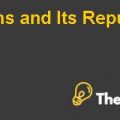
Affordable Care Act
Introduction
The Patient Protection which is also known as Affordable Care Act or (ACA) has been signed by the President of United States of America, Barack Obama as a federal statute on the 23rd of March 2010. Basically the act represents the most substantial regulatory overhaul of the United States health care system together with the Educational Reconciliation Act and the Health Care since the passage of Medicaid and Medicare in the 1965. The Affordable Care Act was introduced to increase the overall quality and affordability of health care insurance in the United States/ it basically ensured the decrease in the uninsured rate by escalating the private and public insurance coverage while reducing the cost of health care for each individual and also the government (Feldman, 2011).
The act introduced a number of different mechanisms which included the subsidies, mandates and the insurance exchange which was meant to increase the affordability and the coverage. This law also required insurance companies to cover every applicant within the minimum standards and it also offers the same rate irrespective of the preexisting conditions or the sex. Along with this, additional reforms have also been introduced to reduce the costs and recover health care outcomes by shifting the system towards improved quality rather than quantity through the increasing regulations, incentives and the competition to rationalize the delivery of health care (Barr, 2011).
Risks and concerns for the internal and external auditor
For the internal and external auditors there can be various concerns in the light of Affordable care act. Being an internal auditor, a person could be concerned about the Enrollment management and the financial implications related to the overall task. One of the major concerns of the internal auditor is about handling the negative media coverage, public relations and communications issues which occurs in regular interval of times. Moreover, internal auditor is also concerned about the overall impact of the compliance risk. Usually they have been found less aligned with organizational priorities associated with strategic business risk (Feldman, 2011).
They are less concerned with the PPACA’s provisions which needs to be a part of their immediate concern, so that this could help the organization in a real optimistic manner. This has been noticed that internal auditors are less concerned with the organization overall goals which needs to be achieved for longer term. They are also concerned with the management of both the existing and emerging risks. There is no doubt that challenge of balancing out the conventional internal audit activities and the challenges while working on methods which ask them to keep their focus on the strategic issues are somehow universally same. The main concern of the internal auditor which comes under the Affordable Care Act, which is asked to give special coverage where workplace insights for the better results are achieved through increased role of the internal auditor which can be developed as per the industry wants and needs. The internal auditing also helps in taking the responsibility for managing risk which monitors the demands and wants that have sparked with time to time (Barr, 2011).
These external audits are quite common in the full range of health care products. As far as the role of external auditors are concerned about the consistency and accuracy of the hospitals under the Affordable care act. It also noted that the external auditors address whether the Exchange is fulfilling the § 155.1200 (a) (1) by keeping a correct accounting of Exchange expenditures and receipts in accordance with the globally followed generally accepted accounting principles formally known as (GAAP). These external auditors are also concerned with state exchange procedures to comply with the regular standards.
The external auditors are hired because that establishes a protection program which engages an independent, capable auditing entity to execute a financial and exceptional programmatic audit for each benefit year of its State-operated protection program in accordance with standard principals preferably the generally accepted accounting principles. These auditors are bound to give the excellent financial opinion for better future outcomes. They are usually hired through the third party to maintain effective transparency. Moreover, these auditors are also concerned for highlighting the weakness found during the audit so that the necessary changes can be made as per needs and wants.
What exposures does the employer have?
The exposure to employers under Affordable Care Act shares the responsibility rules which vary from employer to employer. It is a fact that employers with a stable workforce to whom they have previously provided the robust, broad based and major medical coverage which is in the finance, information technology and the banking sector will obviously have less difficulty in satisfying the act’s pay or play rules. In comparison, the employers with large ........................
This is just a sample partial case solution. Please place the order on the website to order your own originally done case solution.













